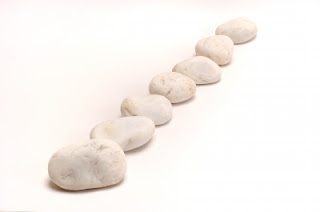I am always searching for new ways of doing things, less expensive things, things that are also ecologically friendly, and things that are just awesome. Soap nuts are delightful natural cleaning product that is excellent for use in the laundry or for making all-natural cleaning products! Ever since I saw mention of them on an internet forum which I visit, I've been curious, so I did some research and decided to give them a try.
Soap nuts are berries, or technically a drupe, from the Sapindus tree or shrub (Sapindus Mokorossi). They grow naturally in the Himalayas and produce saponin. That is a natural surfactant that changes the surface tension of water and allows the water to get into the fibers of clothing, break down dirt, and float it away. If you use soap nuts in your laundry, there are no suds. Instead, the dirt breaks down, the water looks dirty, but the clothes are clean. The dirt simply goes down the drain with the rest of the waste water. There is no smell/scent, and soap nuts are very gentle, so they're perfect for baby clothes, diapers, or for those who have sensitivities to soaps, detergents, or fragrances. They are "green," eco-friendly, and are safe for septic and sewage systems.
The best part is that you can get multiple uses from just a few of the berries. They can be reused up to 10 times before they disintegrate and need to be replaced. Just remove the berries from the load of laundry once it's finished, leave them in their bag, allow them to dry, and reuse with your next load. When the berries become very thin and crumble, it's time to replace them.
I bought my first batch of soap nuts from Amazon. I had a $5 credit that was burning a hole in my pocket, so I purchased the 100 load box of Eco-Nuts. It's a relatively small box packed full of these shiny, brownish-tan dried berries, along with 2 muslin sacks in which to place the berries.
 I just tried my first load of laundry, and I must say that I'm impressed! The clothes came out clean, soft, and scent free straight out of the washing machine. I did add a Gain fabric softener sheet to the dryer. This is not necessary, as the saponin in the berries acts as a natural fabric softener; however, I have guys in my household, and let's just say that sometimes you NEED scented laundry.
I just tried my first load of laundry, and I must say that I'm impressed! The clothes came out clean, soft, and scent free straight out of the washing machine. I did add a Gain fabric softener sheet to the dryer. This is not necessary, as the saponin in the berries acts as a natural fabric softener; however, I have guys in my household, and let's just say that sometimes you NEED scented laundry.
The berries work best in hot water or warm water but will also work
in cold water, although there may not be as much saponin released. So if you want to do a load of laundry in cold water but want to make sure there's enough saponin to ensure a clean load, try soaking or steeping the bag of berries in a cup of hot water for about 10 minutes prior to starting the wash load. Then add the entire batch of water plus the bag containing the berries to the wash and proceed as usual.
Overall, I thought they worked very well for a first- time use, and I am curious to see how well they work using them numerous times. Regardless, this is a very economical and eco-friendly way to do laundry!





































